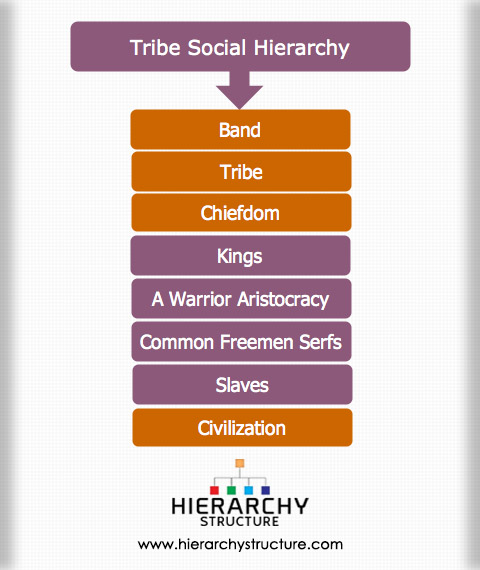Over the years there has been considerable debate over the classification and characterization of the tribes. A tribe is considered to be a primary group of people living in a barbarous or primitive way under a chief or leader. A system of classification of the tribes was proposed by the Anthropologist, Elman Service, which was based on the role of the state and social inequality.
Band
Hunter-gatherer bands are generally egalitarian: Most of the hunter-gatherers are nomadic or semi-nomadic, who do live in temporary settlements. These mobile communities of people erect shelters using impermanent materials, or they may live in natural rock houses, wherever available. Some of these hunter-gatherers, such as the native people of the Pacific Northwest Coast, lived in rich environments that permitted them to be semi sedentary or sedentary. Most of the African hunter-gatherers are egalitarian, and the women of these bands are as powerful as the men. These hunters or bands never had permanent leaders; instead, any person took the initiative to be a leader and perform a particular task.
Hunter-gatherers are grouped together based on kinship and the band membership. The post marital residence of the hunter-gatherers inclines to be matrilocal, initially. Young mothers do enjoy the childcare support they receive from their own mothers, who continue to live nearby in the same camp. The system of descent and kinship among the human hunter-gatherers were flexible and matrilineal. Examples of Hunter-gatherer bands are Hazda of Tanzanian rainforest and Agta of Luzon, Philippines.
Tribe
In these societies, there are some limited instances of social class rank and prestige. Tribes are a number of bands grouped together. Some tribes have a very simple social structure with less stratification, which are held together by marriage, friendship, decent and common interest. The basic integration mechanism of such associations is kinship with no economic class differentiation, and Angami, Santhal, Munda, Khasi are the examples of Indian tribes.
Chiefdom
These are stratified tribal societies led by chiefton: Some tribes had a very complex organizational structure and these tribes were led by a head called the chiefton. This was a social organization more complex than a tribe and less than a civilization. Such kinds of social organizations were called chiefdoms which were very unstable and were prone to cycles of collapse and renewal. An example of this kind of social organization would be the Germanic Peoples who conquered the Western Roman Empire in the fifth century. They had a complex social hierarchy comprising of
- Kings
- A warrior aristocracy
- Common freemen serfs
- Slaves.
Civilization
It is a complex social hierarchies and organized, institutional governments: A civilization is a complex society which is characterized by symbolic communication forms, urban development, and a deliberate separation from and dominance over the natural environment. These civilizations are closely associated with and are further defined by socio-politico-economic features, including specialization of labour, centralization, domestication of both other organisms and humans.
Thus, this is the tribal social hierarchy explained in short where bands are the smallest units of the Tribal society. The bands do join to form a tribe. Larger tribes give birth to a chiefdom, which further can expand to become a civilization.

